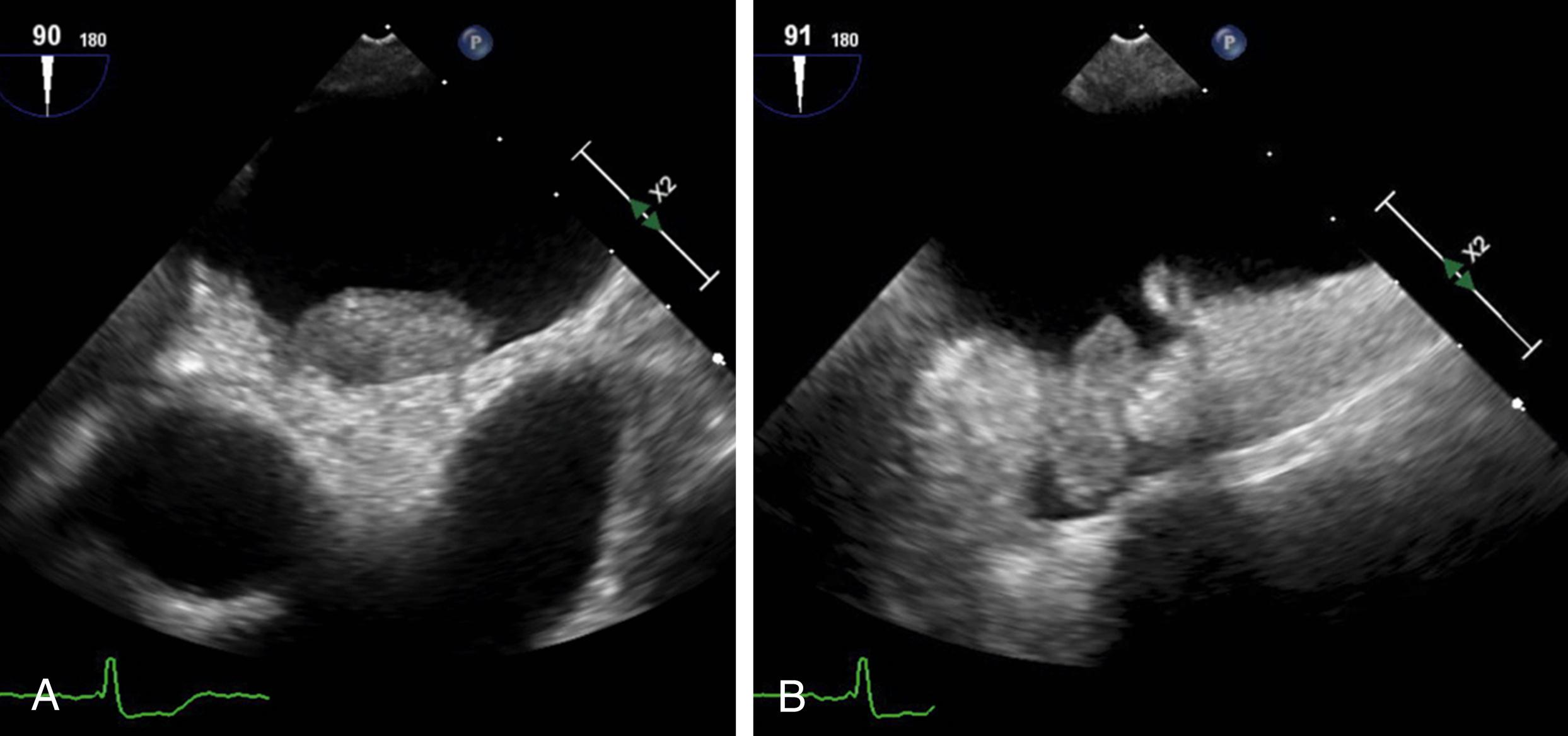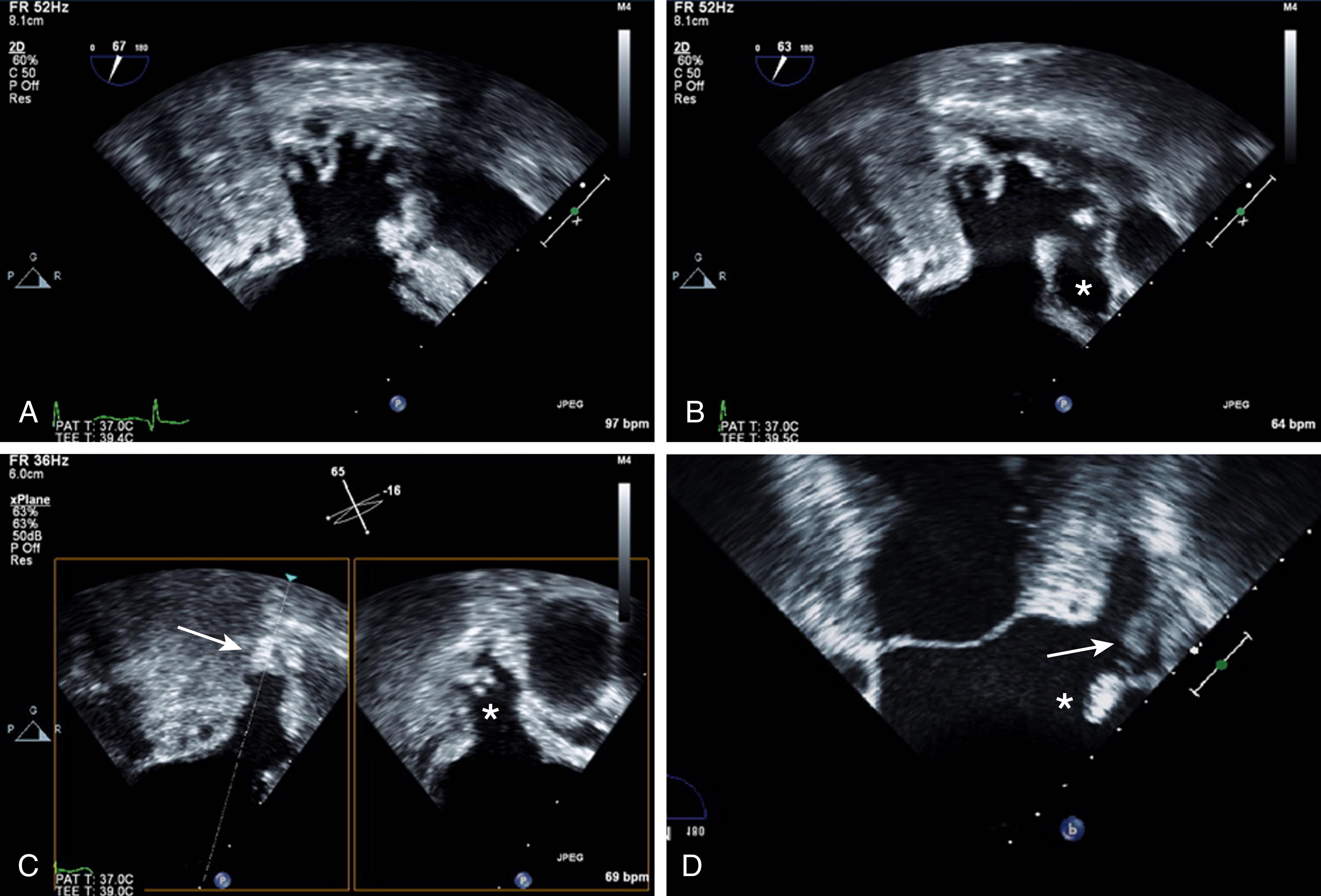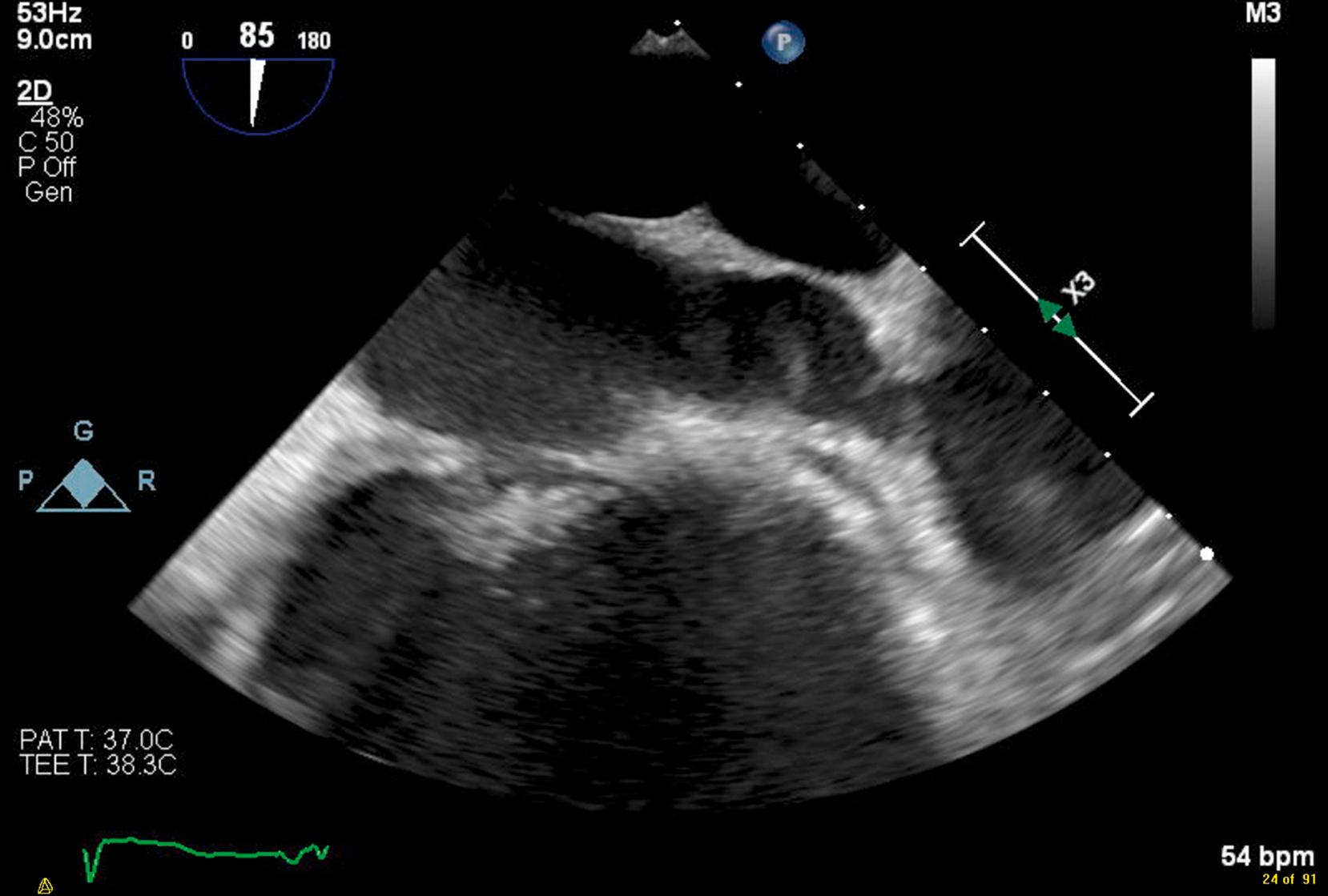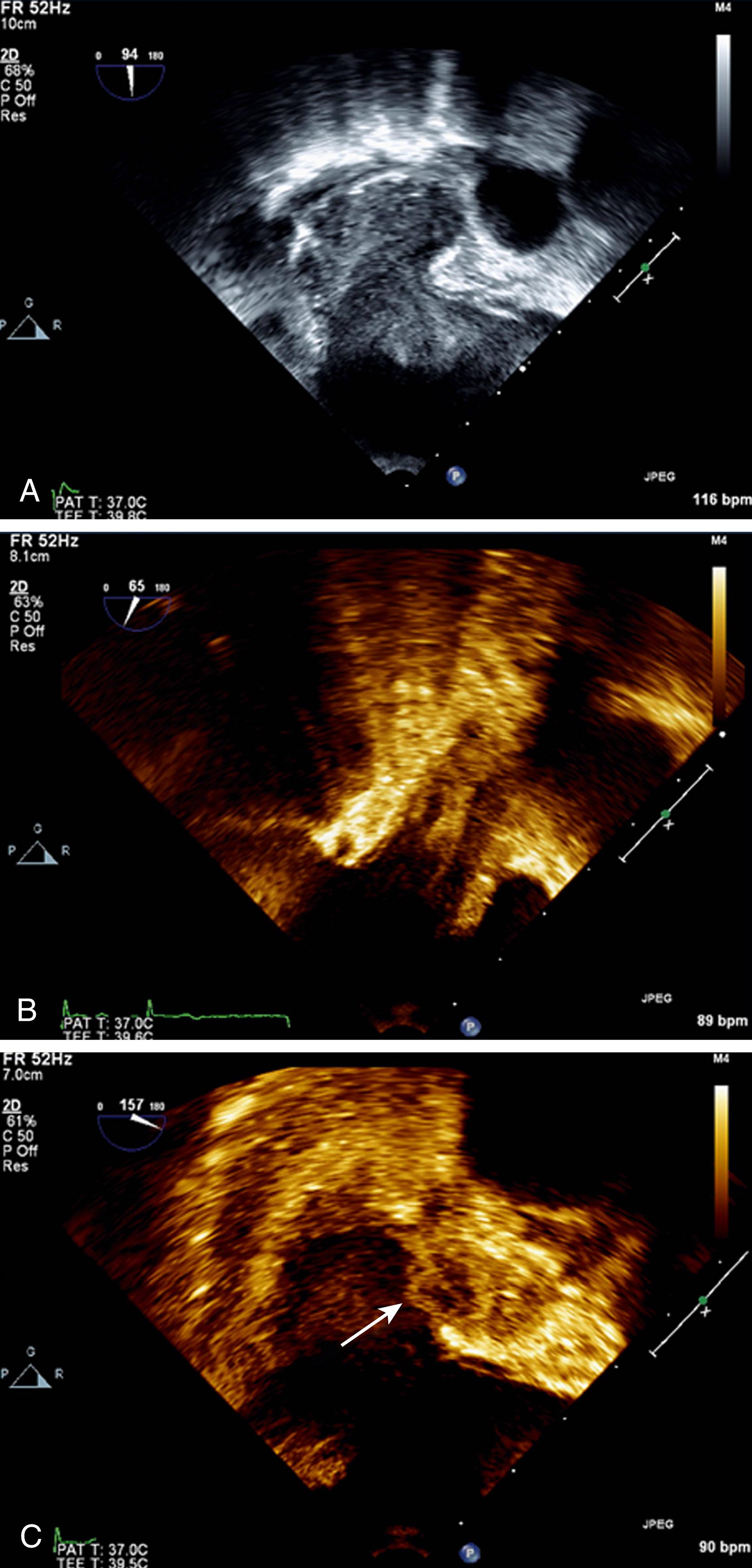Physical Address
304 North Cardinal St.
Dorchester Center, MA 02124
The left atrial appendage (LAA) is by far the most common location for an atrial thrombus with extra-appendage thrombi being very rare in nonvalvular atrial fibrillation (AF). Thrombus forms within the LAA primarily as a result of stasis within the cavity, although additional components of the Virchow triad, such as hypercoagulable state and endothelial dysfunction, likely also contribute. The cul-de-sac morphology of the LAA may also predispose to variable contractile dysfunction and stasis. Atrial arrhythmias such as AF and atrial flutter (AFL) are associated with left atrial (LA) contractile dysfunction; however, there is a significant heterogeneity in the degree of LA dysfunction depending on the arrhythmia (in general, more contractility from AFL than AF) and duration of arrhythmia (long-standing arrhythmias associated with worse contraction). Additionally, elevated LA or left ventricular (LV) filling pressures and mitral valve disease (mitral stenosis in particular) also lead to decreased LA contractile function, which can promote stasis. This may also be seen in surgical or catheter-based procedures that cause endocardial damage within the left atrium (fibrosis after catheter-based ablation, interatrial septal or LAA occluder devices, or surgical incisions for cardiac surgery).
LA thrombus is infrequently demonstrated on transesophageal echocardiography (TEE) performed in patients with sinus rhythm (SR) ; nonetheless, it may be seen in patients without atrial arrhythmias in the setting of severe LA stasis or cardiac dysfunction (particularly with infiltrative process such as cardiac amyloidosis) or in those with transient episodes of AF that are clinically undetected. Transient LA dysfunction (“stunning”) occurring after conversion from AF or AFL into SR caused by pharmacologic or electric cardioversion is well described and one of the primary reasons that uninterrupted anticoagulation is recommended for at least 4 weeks after cardioversions.
TEE is an ideal imaging modality for the left atrium because of its anatomic position and proximity to the esophagus. , In the evaluation for intracardiac thrombus, the LAA and LA should be scanned separately and meticulously for the presence of thrombus. Because of the highly variable morphology and potential for multiple lobes, the LAA should be systematically scanned in multiple omniplane angles. Scanning should be performed from the midesophageal position with mild probe anteflexion. To fully delineate the LAA cavity and its multiple lobes, the scanning omniplane angle should be gradually changed from 0 degrees to 150 degrees (the latter allowing for visualization of the LAA in its widest dimension). Effort should be made to isolate the LAA to the middle of the imaging window and limit any superficial structures that may contribute to shadowing or imaging artifact. Three-dimensional (3D) echocardiography may also aid in the detection of LAA thrombus. The main LA cavity, a much less common location of intracardiac thrombi, should be scanned in a vertical (90-degree) scanning plane with gradual clockwise rotation of the TEE probe from the left pulmonary veins (adjacent to the LAA) to the right pulmonary veins. When indicated, vertical scanning may be supplemented by horizontal (0-degree) scanning, with a gradual inferior-to-superior outward motion of the TEE probe, from the inferior to the superior aspect of the LA body.
Acute LA mural thrombi may have variable size, morphology, and locations; however, it usually appears as a heterogenous mass with lower echogenicity than the surrounding LA walls and can be associated with LAA thrombus ( Fig. 127.1 and , ![]() ). A chronic LA thrombus may appear more echogenic than the surrounding walls and may occasionally have calcifications. After diagnosis, it is important to characterize the embolic potential of the thrombus based on its size, morphology, attachment points (if there is an associated narrow stalk), and mobility. Echodensities in the LAA often represent normal variants (pectinate muscles) or artifacts, and additional imaging modalities may be necessary for further characterization.
). A chronic LA thrombus may appear more echogenic than the surrounding walls and may occasionally have calcifications. After diagnosis, it is important to characterize the embolic potential of the thrombus based on its size, morphology, attachment points (if there is an associated narrow stalk), and mobility. Echodensities in the LAA often represent normal variants (pectinate muscles) or artifacts, and additional imaging modalities may be necessary for further characterization.

Video 127.1. A, Large left atrial appendage thrombus. B, Layered left atrial mural thrombus associated with the left atrial appendage thrombus.
Comprehensive scanning of the LA and LAA will help overcome several diagnostic pitfalls, including incorrectly diagnosing prominent pectinate muscles as LAA thrombi ( Fig.127.2 and , ![]() ), overlooking the presence of a thrombus in a multilobed LAA, and incorrectly interpreting various artifacts as thrombi. Limited quality near-field imaging of the LA body adjacent to the TEE probe can also be overcome with comprehensive scanning. If LAA thrombus is confirmed, the right atrial appendage (RAA) should also be evaluated. Spontaneous RAA thrombus is rare, but the presence of LAA thrombus makes it significantly more likely ( Fig. 127.3 and ,
), overlooking the presence of a thrombus in a multilobed LAA, and incorrectly interpreting various artifacts as thrombi. Limited quality near-field imaging of the LA body adjacent to the TEE probe can also be overcome with comprehensive scanning. If LAA thrombus is confirmed, the right atrial appendage (RAA) should also be evaluated. Spontaneous RAA thrombus is rare, but the presence of LAA thrombus makes it significantly more likely ( Fig. 127.3 and , ![]() ).
).


Video 127.2. A and B, Pectinate muscles within in the left atrial appendage (LAA). Note the relatively preserved contraction of the LAA in a patient with atrial flutter of short duration. C, Apparent “mass” at the tip of the LAA, shown to be pectinate muscles by imaging in an orthogonal plane (biplane imaging using a matrix transesophageal echocardiographic probe).
Video 127.3. A and B, Left atrial and right atrial appendage thrombi seen in the same transesophageal echocardiogram.
In addition to the confirmation or exclusion of LA and LAA thrombus, additional imaging findings can assist in assessing thromboembolic risk, including the presence of spontaneous echocardiographic contrast (SEC) or “smoke” within the LA or LAA, and in selected cases, assessment of LAA contractile function. Although attempts to semiquantify the degree of LAA SEC have been previously reported, it is practical and clinically sufficient to categorize SEC as either mild or severe (“dense”) ( Fig. 127.4 and ![]() ). If dense LAA SEC is appreciated, special attention and a systematic approach should be pursued to exclude the presence of LAA thrombus because dense SEC is almost uniformly associated with the presence of thrombus. Because the appearance of the SEC may be significantly affected by various echocardiographic machine settings, mainly gain, the image quality of the surrounding LA walls and the adjacent cardiac structures should be optimized to avoid overestimation or underestimation of SEC severity. Additionally, dense SEC may appear as “sludge,” which may be difficult to differentiate from a “soft” thrombus ( Fig. 127.5 and ,
). If dense LAA SEC is appreciated, special attention and a systematic approach should be pursued to exclude the presence of LAA thrombus because dense SEC is almost uniformly associated with the presence of thrombus. Because the appearance of the SEC may be significantly affected by various echocardiographic machine settings, mainly gain, the image quality of the surrounding LA walls and the adjacent cardiac structures should be optimized to avoid overestimation or underestimation of SEC severity. Additionally, dense SEC may appear as “sludge,” which may be difficult to differentiate from a “soft” thrombus ( Fig. 127.5 and , ![]() ), and clinical considerations to treat these patients as if a LAA thrombus exists are recommended.
), and clinical considerations to treat these patients as if a LAA thrombus exists are recommended.


Video 127.4. Spontaneous echocardiographic contrast seen within the left atrial appendage.
Video 127.5. Severe (dense) spontaneous echocardiographic contrast ( A ) and left atrial appendage “sludge” or soft thrombus ( B and C ).
LAA contractile function can be challenging to assess but may play an important role in cardioembolic risk assessment in patients undergoing TEE. Visual function assessment, pulsed-wave (PW) Doppler measurements of flow at the proximal LAA cavity (adjacent to the LAA orifice), measurements of LAA wall motion velocities by tissue Doppler, and LAA wall speckle tracking to measure strain, as well as the presence of atrial wave forms on PW Doppler have all been described as quantitative and qualitative parameters of LAA contractility. , , Although the hypothesis that preserved LAA contractile function decreases the likelihood of LAA thrombus formation, the clinical implications of LAA contractility are less established. Additionally, there may be cause other than atrial arrhythmias for profound LAA contractile dysfunction such as severe LV dysfunction or mitral stenosis.
In addition to two-dimensional (2D) echocardiography, 3D echocardiography can be helpful in defining the presence of LA thrombi, particularly when there are multiple lobes of the LAA and can be used to help differentiate pectinate muscles from thrombi. The use of 3D was evaluated in a small, single-center trial wherein TEEs were reviewed with both 2D and 3D imaging. Of the studies, a total of 12 were equivocal on 2D imaging for the presence or exclusion of a LAA thrombus. 3D TEE was able to further characterize 11 of the 12 equivocal studies (1 thrombus, 10 without thrombus) and otherwise had excellent agreement with 2D. When there remains uncertainty regarding the presence of LAA thrombus, the use of ultrasound-enhancing agents (UAEs; microbubble contrast) during TEE has been demonstrated to increase the accuracy of detecting LAA thrombus.
Become a Clinical Tree membership for Full access and enjoy Unlimited articles
If you are a member. Log in here